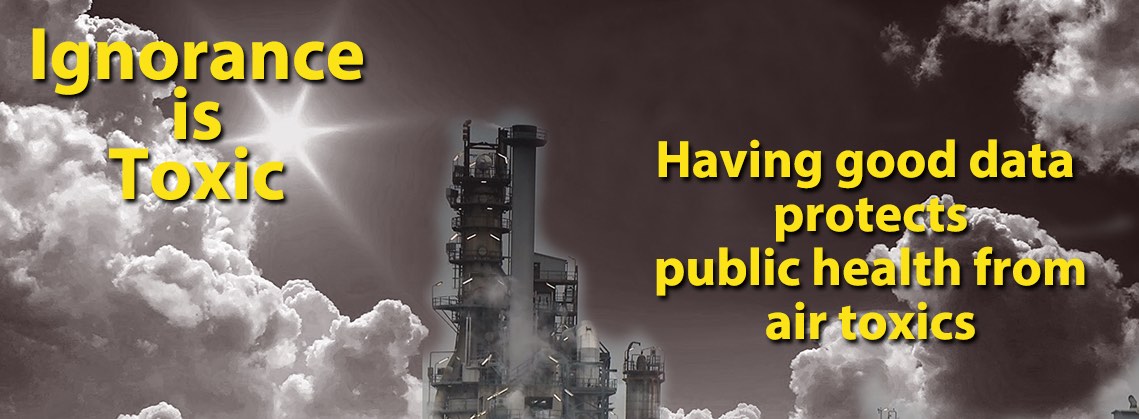Portland Clean Air is releasing today a new report calling into question the validity of Oregon’s air permitting system. The study, A Comparison of Toxic Chemical Use by Permit Type in Multnomah and Washington County, looks at toxic chemicals used by manufacturers in Multnomah and Washington Counties that are reported to the State Fire Marshall and compares them to those reported to air regulators. The study demonstrates that up to 95% of hazardous chemical usage is by industries that do not report their hazardous air pollution to a regulatory authority.
Under federal regulations, the State Fire Marshall is required to keep track of hazardous chemicals stored on an industrial site, called a Hazardous Substances Information System (HSIS). HSIS is necessary to inform and protect firefighters in emergency situations. With all industrial chemical users required to report, the State Fire Marshall HSIS data provides comprehensive tracking of chemical storage.
The Oregon Department of Environmental Quality is Oregon’s air regulation agency. The DEQ also collects chemical information when they regulate an industry for air pollution and issue discharge permits.
The DEQ issues 6 levels of Air Contaminant Discharge Permits (ACDPs). Portland Clean Air’s research shows that Title V permits – given to the "large polluters" – emit less than 5% of total permitted air pollution. In Multnomah and Washington County, the extent of this study, only 20 out of 443 industries with an ACDP have the more detailed and stringent Title V Permits.
The report’s key findings are:
1. Industries with ACDP's that are not Title V, use the majority of hazardous chemicals in each HSIS hazard class. These presumably smaller industries with ACDP’s use approximately 95% of hazardous chemicals stored by industry in the Multnomah and Washington counties. Their potential to emit pollutants into air and water is significant. However, these permitted industries are not required to report emissions to the Department of Environmental Quality, the agency responsible for protecting air quality.
2. The largest polluters required to have a Title V industrial air pollution permit release less than 5% of hazardous chemical usage in Multnomah and Washington County.
3. Industries without an ACDP ostensibly do not pollute the air. However they store the majority of dangerous chemicals on site. Some do pollute the air. For example, Uroboros Glass was never required to apply for an ACDP but they are a major air polluter. The glassmaker’s emissions were neither tracked by a permit nor reported to the DEQ.
4. Title V industries in Multnomah County have 176,375 55-gallon drums of hazardous chemicals on site. In comparison, all other ACDP types have 4,954,528 55-gallon drums of hazardous chemicals on site.
Portland Clean Air Director Greg Bourget believes these data gaps are serious. “It is the DEQ's job to know how much lead or mercury, or other dangerous chemicals are going into the air,” he said. “But their permitting system is broken or, more accurately, irrelevant to the tracking of chemical pollutants.”
Lisa Arkin, Executive Director of the clean air advocacy organization Beyond Toxics, supported the conclusions advanced by the study. “Until the DEQ requires that all industrial polluters provide detailed and accurate reporting of their air toxics, Oregonians will never know what they are breathing in their community’s air,” she observed. “We need toxics right-to-know reporting, not pollution estimates provided by industry consultants.”
"Had DEQ collected the information on Bullseye Glass and understood its processes, they would have known about the toxic heavy metals being emitted into our neighborhood 42 years ago," said Katharine Salzmann member of Eastside Portland Air Coalition, a clean air advocacy group that is part of the coalition of organizations supporting the need for the kind of data collection identified in the report.
The DEQ data gaps in chemicals emissions identified in the new report have led to serious air pollution problems. The latest EPA National Air Toxics Assessment released December of 2015 found Portland was the worst American city for respiratory distress from air pollution. Exposure to hazardous industrial chemicals causes asthma, organ damage, birth defects, and cancer. You can read the report online here: http://portlandcleanair.org/files/ACDP%20HSIS%20Study%20by%20PCA.pdf
Beyond Toxics is a statewide environmental justice organization working to guarantee environmental protections and health for all communities and residents. We find solutions to the root causes of toxic pollution.
Eastside Portland Air Coalition is a neighborhood group with a mission to mobilize and support neighbors impacted by toxic air pollution while partnering with stakeholders to enact permanent change in improving air quality.
Portland Clean Air's mission is to improve our air quality by educating and activating people directly affected by toxic air emissions.






